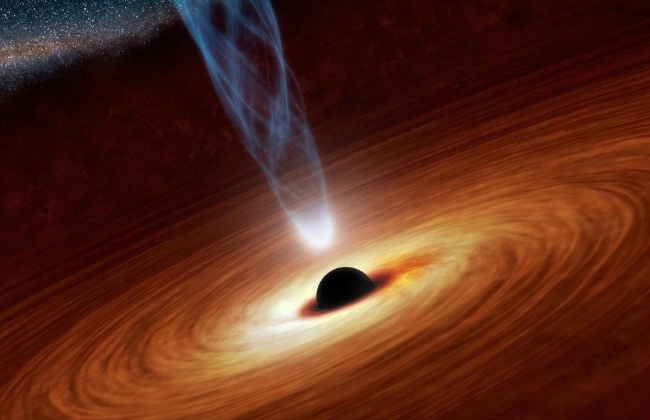Black holes are one of the most fascinating objects in the universe. They are regions in space where the gravitational pull is so strong that nothing can escape, not even light. These objects have captured the imaginations of scientists and the public alike since their existence was first theorized in the early 20th century. In this article, we will explore what black holes are, how they form, and what we currently understand about them.
What are Black Holes?
Black holes are regions in space where gravity is so strong that nothing, not even light, can escape from them. They are formed from the remnants of massive stars that have collapsed in on themselves at the end of their lives. As these stars run out of fuel, they stop producing the energy that counteracts the force of gravity, causing the star to collapse under its own weight.
The final stage of a massive star’s collapse can result in one of two types of black holes: stellar black holes and supermassive black holes. Stellar black holes are the most common type and are formed from the remnants of stars with masses between 10 and 100 times that of the sun. Supermassive black holes, on the other hand, are found at the centers of galaxies and are thought to have masses ranging from millions to billions of times that of the sun.
How do Black Holes Form?
As mentioned earlier, black holes are formed from the remnants of massive stars that have collapsed in on themselves. When a massive star runs out of fuel, it can no longer produce the energy needed to counteract the force of gravity. The core of the star then collapses, causing a massive implosion. The outer layers of the star are blown away in a supernova explosion, leaving behind a core that is so dense that it becomes a black hole.
The formation of a supermassive black hole is still not well understood, but it is believed that they grow over time through a process called accretion. This process involves the black hole pulling in matter from its surroundings, such as gas and dust. As the matter falls towards the black hole, it heats up and emits energy, creating a bright disk of material around the black hole known as an accretion disk. This disk can emit large amounts of energy in the form of X-rays, making it easier to detect supermassive black holes.
Recent Discoveries and Theories
Despite the enormous gravitational pull of black holes, they are not entirely invisible. They can be detected through their effects on nearby matter, such as stars or gas clouds. In recent years, scientists have made several important discoveries and advances in our understanding of black holes.
One such discovery is the existence of intermediate-mass black holes, which have masses between those of stellar black holes and supermassive black holes. These objects are thought to be the missing link in the evolution of black holes, as they could help explain how supermassive black holes formed.
Another recent discovery is the detection of gravitational waves, which are ripples in spacetime caused by the collision of two black holes. The first detection of gravitational waves was made in 2015 by the Laser Interferometer Gravitational-Wave Observatory (LIGO), marking a significant breakthrough in our ability to study black holes and other cosmic phenomena.
Scientists are also continuing to study the properties of black holes, including their spin, mass, and size. Some theories suggest that black holes could be used as a tool to study the fundamental nature of space and time, including the nature of gravity and the behavior of matter under extreme conditions.
Conclusion
Black holes are among the most intriguing and mysterious objects in the universe. They are formed from the remnants of massive stars and have such strong gravitational fields that nothing can escape their grasp. Recent discoveries and advances in our understanding of black holes have shed light on these enigmatic objects, but there is still much we do not know.
![]()





